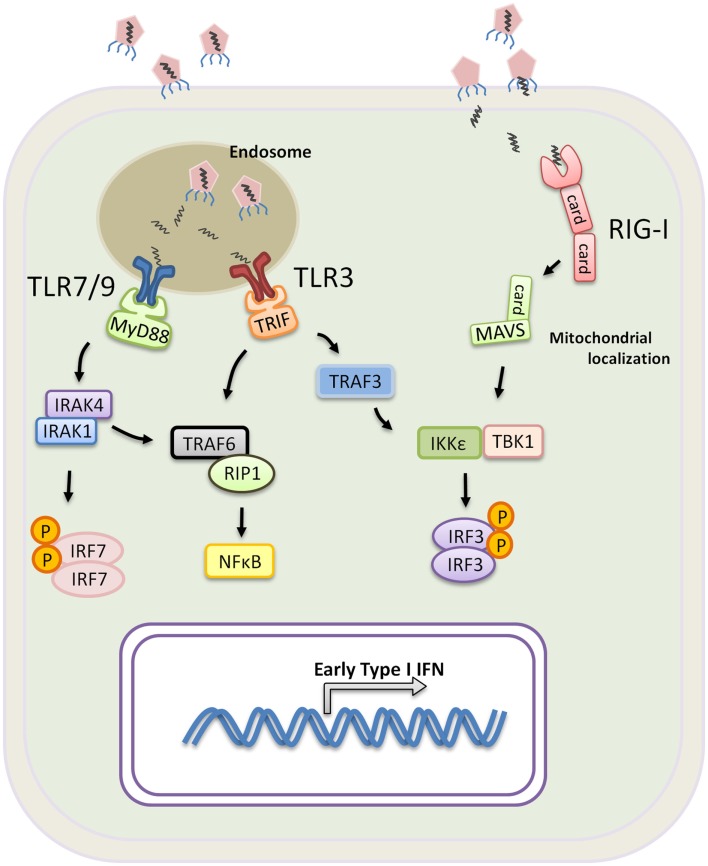Figure 1.
Induction of Type I IFN by PRR during a viral infection. TLR3, 7, and 9 are mainly expressed within the endosomes of innate immune cells. Virus or virus-infected cells are taken up by macrophages or DCs, and the viral nucleic molecules are exposed upon endosomal acidification. Activation of TLR7 and 9 requires signaling through MyD88 and recruitment of IRAK4, IRAK1, and IRF7. IRF7 becomes phosphorylated and translocates into the nucleus upon dimerization resulting in transcription of Type I IFN genes. TLR3 signals exclusively through Trif which binds TRAF6 and recruits RIP1 for NF-κB activation. Trif also binds TRAF3 leading to TRAF3 K63-linked ubiquintination, facilitating the recruitment of TBK1, IKKε and IRF3 for IRF3 phosphorylation. Phosphorylated IRF3 homo-dimerizes and translocates into the nucleus for transcription of Type I IFN genes. RIG-I or RIG-I like receptors are expressed in all nucleated cells, and they recognizes viral RNA found in the cytoplasm. Upon activation, RIG-I recruits MAVS through the CARD domain interaction, and, analogous to TRIF, MAVS further binds IKKε, TBK1 and IRF3 to promote IRF3-activation and Type I IFN expression.

